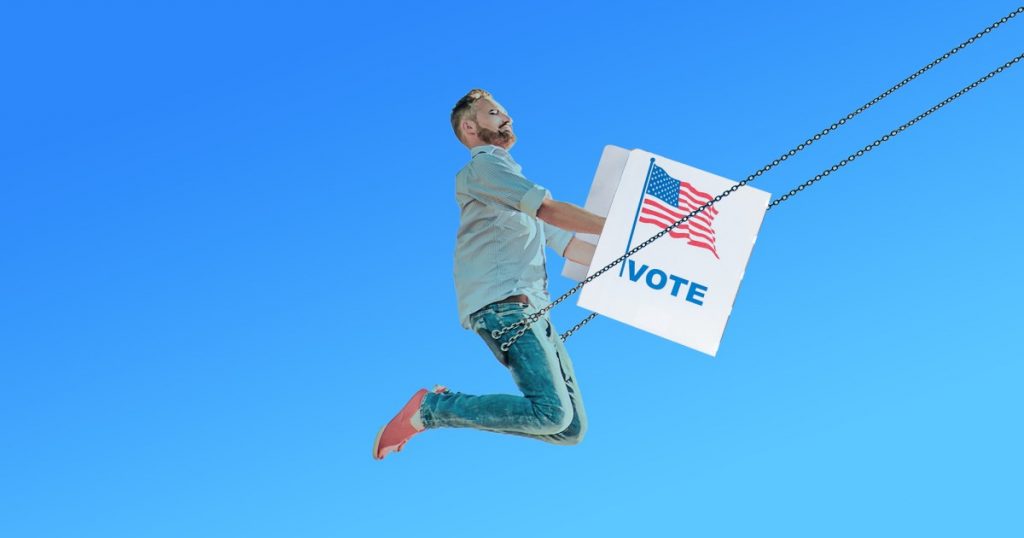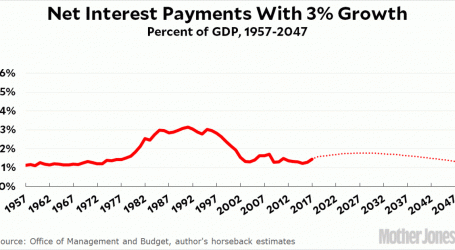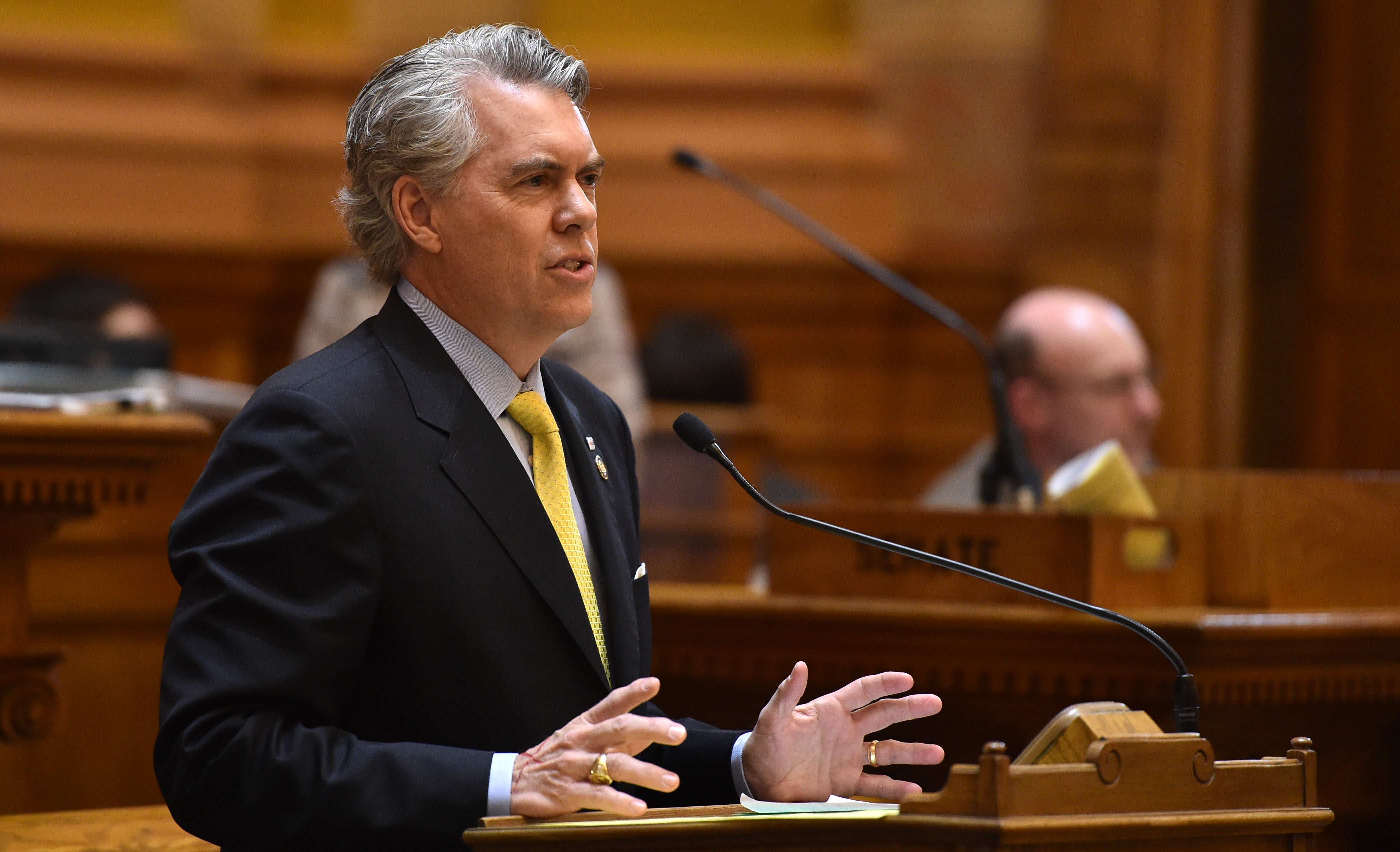Here Are the Only Swing Voters You Need to Care About in 2024
Mother Jones illustration; Getty
Fight disinformation: Sign up for the free Mother Jones Daily newsletter and follow the news that matters.Donald Trump’s criminal cases. Joe Biden’s age. The wars in Gaza and Ukraine. Migrants at the border. Food prices. There are many factors that can decide the 2024 presidential election and set the future course of the United States. But this titanic contest is likely to be determined by a tiny slice of the nation’s citizens—3 million or so voters. That’s less than 1 percent of the population. A repeat face-off between presumed nominees Biden and Trump holds potentially huge consequences for the nation. Will the executive branch be controlled by a deceptive demagogue with autocratic impulses who tried to overturn the last election? Will the US take the necessary steps to address the climate crisis? Will America continues to support Ukraine in its battle against Russia? Yet the mathematics of this election are rather simple and small.
Let’s run through the numbers. Since the best predictor of the future is the past, start with the 2020 race.
There were seven states that year where the margin of victory was under 3 percent: Georgia (.3 percent), Pennsylvania (1.2 percent), Michigan (2.8 percent), Wisconsin (.6 percent), Arizona (.4 percent), Nevada (2.4 percent), and North Carolina (1.3) percent. Biden won six, losing only North Carolina. In 2016, Trump triumphed in six of these seven, with Hillary Clinton collecting the Electoral College votes of Nevada. These clearly are the key states for 2024. (Florida and New Hampshire were tight in 2016, but not in 2020.) Call this collection of states Swinglandia.
All told, there were 30.6 million votes in Swinglandia in the previous presidential election. Add them up and here’s the split: 15.4 million for Biden, 15.2 million for Trump. Tight as a tick. Biden collectively won this bloc 50.4 percent to 49.6 percent. That was much closer than the national tally: 51.3 percent to 46.9 percent for Biden.
These states will probably be where the election, once again, is decided. If Biden is victorious in any four of them, he will win (absent any major surprise elsewhere). If he places first in three, he will have to do so in a combination that yields him at least 41 electoral votes. (Pennsylvania, Michigan, and Wisconsin would do the trick for him, with three votes to spare.) If he only bags two of these seven states, he will be out of a job.
Trump needs to win an assortment of four of these states that provide 54 electoral votes (not all combos of four will do that). (You can do the math at home. Here are the states’ electoral votes: Arizona, 11; Georgia, 16; Michigan, 15; Nevada, 6; North Carolina, 16, Pennsylvania, 19; and Wisconsin, 10.)
In one way or another, these 30.6 million Americans hold the key to victory. But most of them are already spoken for—that is, they have made up their minds. This is hardly surprising, given Biden and Trump are known quantities. They’ve both inhabited the White House. They each have offered voters plenty of information and impressions on which to base a vote. Yet polls overall show that about 10 percent of voters are undecided at this point. That would indicate that about 3 million voters in Swinglandia are up for grabs. A slight tipping within this group of voters could determine who lands in the White House.
This is, of course, nuts.
Billions of dollars are being spent to influence the 2024 election. (Fourteen billion dollars were funneled into the 2020 election.) Yet 3 million folks across seven states will be the main deciders. And we can presume that many of them are on the fence because they are not deeply engaged with the nation’s political debate. Those Americans who intensely or moderately follow politics will likely have a preference in this race between familiar candidates who offer stark differences regarding policy and temperament (though not age). Voters who haven’t yet made up their minds are probably people who don’t interact much with the political realm.
This poses a challenge for the political pros: How do you reach these voters? They are probably not paying close attention to politics via the news media or social media. How do you make contact if you cannot hit them with ads or posts? How do you find the right doors to knock on, the right phone numbers to text or call? Moreover, if they are undecided at this point, after Trump’s four years in office (and his conduct afterward) and Biden’s three years (and his long stints as vice president and senator), it’s a good bet they won’t make up their minds until they must. That means weeks—or days—before the November election. Ads at this point—if they even are seen—might not be effective.
Certainly, a major development—a Trump criminal conviction, a medical setback for either—could sway the yet-to-be-swayed. Absent that, it could well be money wasted to go after these voters months before Election Day. Smart political operatives at this point would be conducting the ground work for a persuasion campaign in the fall. Such an effort would include deep-dive, data-driven research efforts to identify the types of voters who now fall into the don’t-know category and building up social networks that are not primarily of an electoral nature but that can later be used to try to reach these voters with election-related messages. One Democratic strategist tells me that several progressive nonprofits are in the process of doing that, especially targeting women in rural areas, small towns, and suburbs in these key states, as well as young Black adults.
Of course, there are plenty of reasons for the presidential campaigns, parties, and partisans on each side to spend money and organize throughout the country. There are key Senate, House, and gubernatorial races outside Swinglandia. And Biden and Trump want to make sure there are no slip-ups with states each of their teams already consider in the bag. Also, their campaigns need to make sure that their past voters in the battleground states stick with them and that they court the millions of new voters in these states who have turned 18 since 2020. Still, in the presidential race, much effort will be focused on those 3 million or so Americans in seven states who largely are too detached from American politics to now state a preference between these two well-known (for some, too well-known) and ideologically opposed candidates.
Both sides have cast the 2024 election in apocalyptic terms. A fear-mongering Trump claims that a Biden reelection will cause the literal annihilation of America, while Biden and his allies accurately point out that Trump tried to overturn the last election, incited an insurrectionist riot, and, thus, poses a clear and present threat to American democracy. This showdown may well determine the future of the nation’s constitutional order. Yet with the highest of stakes, the election appears to be in the hands of a low number of less-engaged voters in only a few states. What reaches them—be it ads, headlines, memes, disinformation, rumors, the opinions of relatives and peers, organizing projects, the candidates’ performances on the campaign trail, or external events—will probably decide the final outcome. Those who don’t yet know which side they are on hold the fate of the United States in their hands—whether they know it or not.





